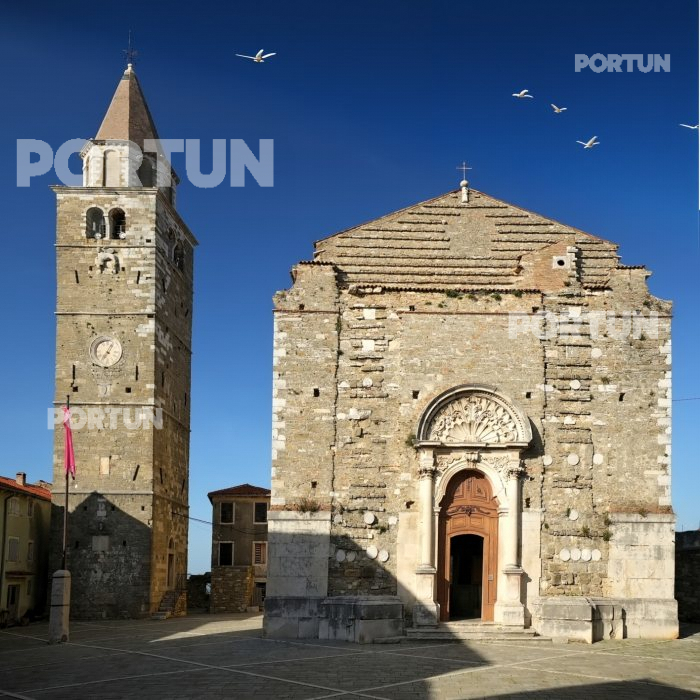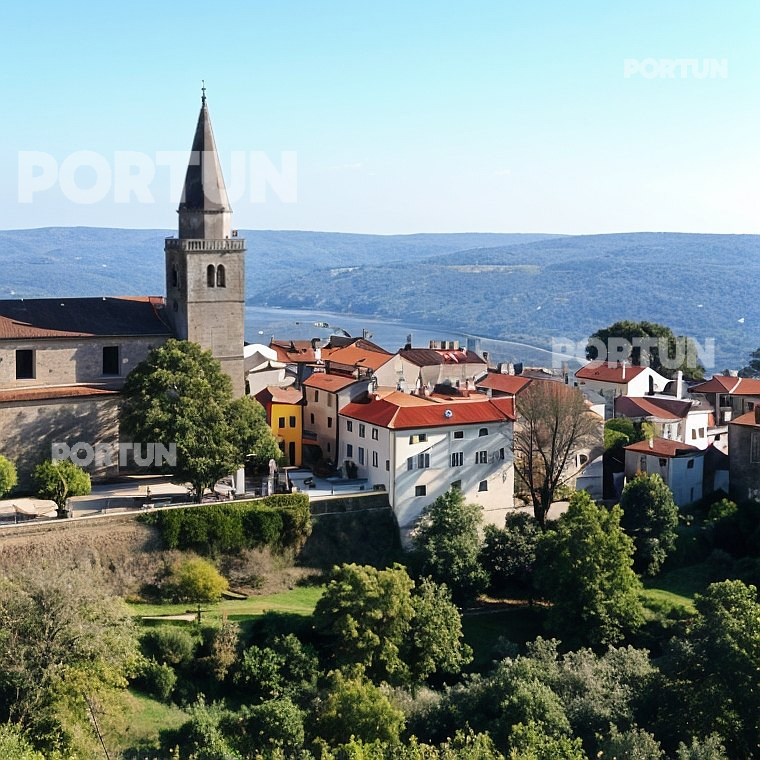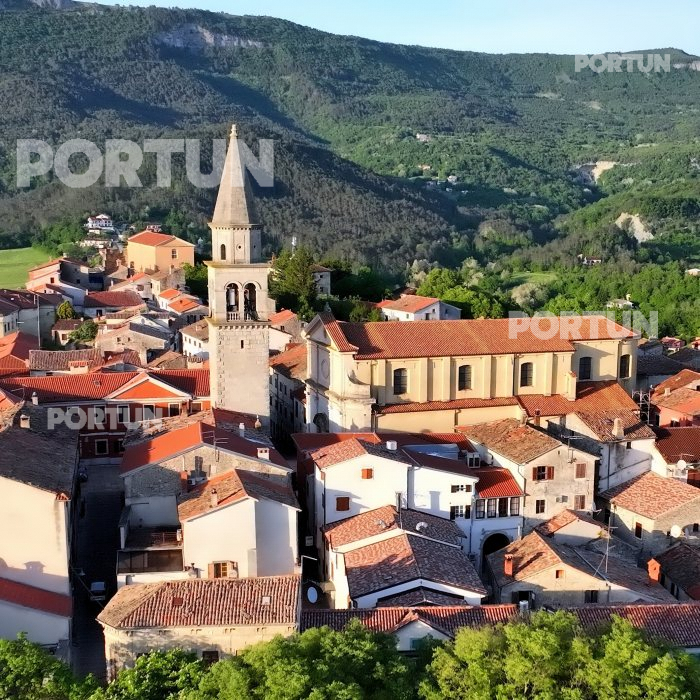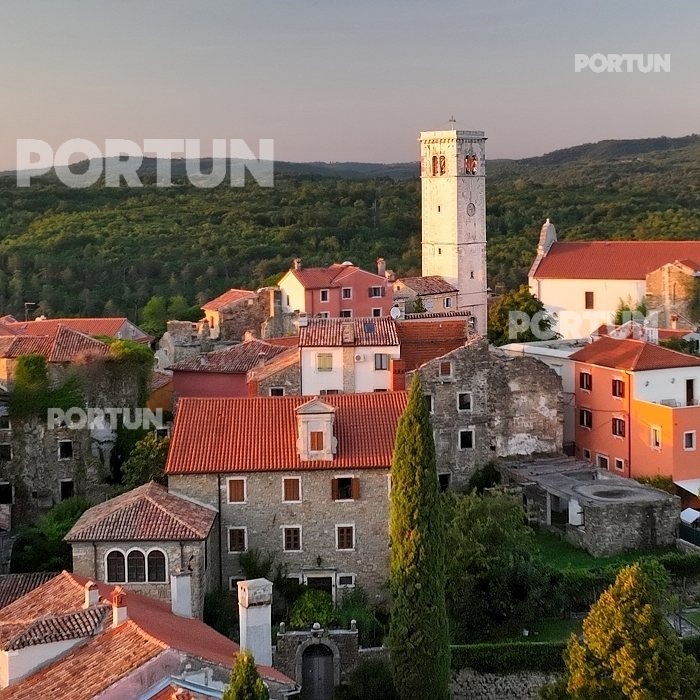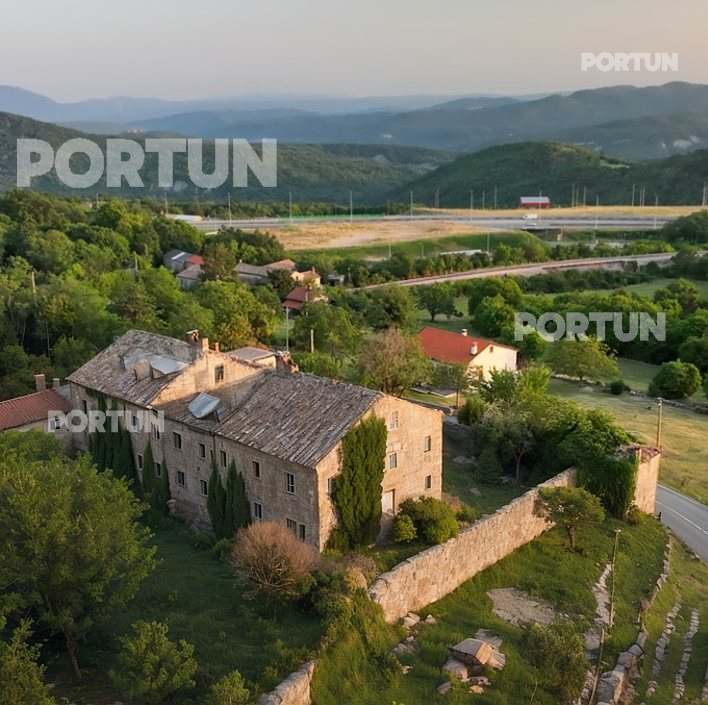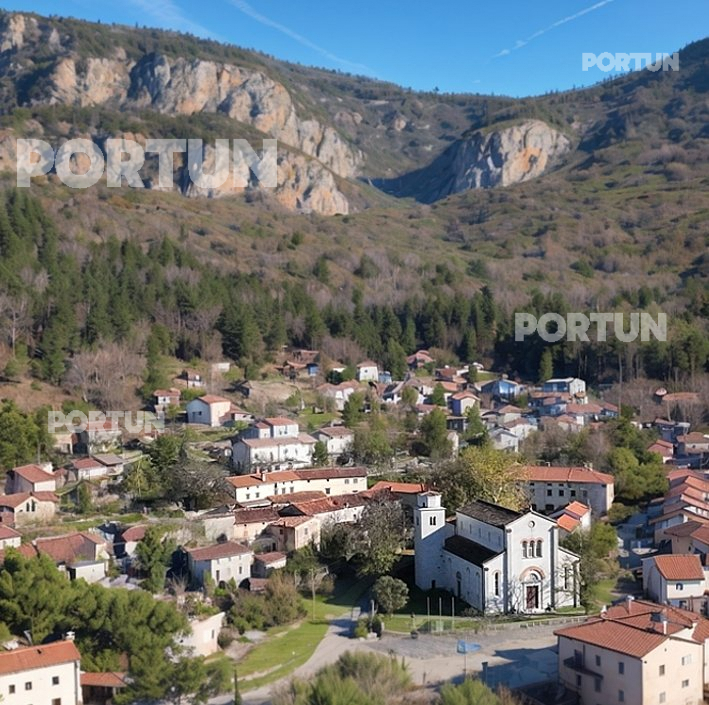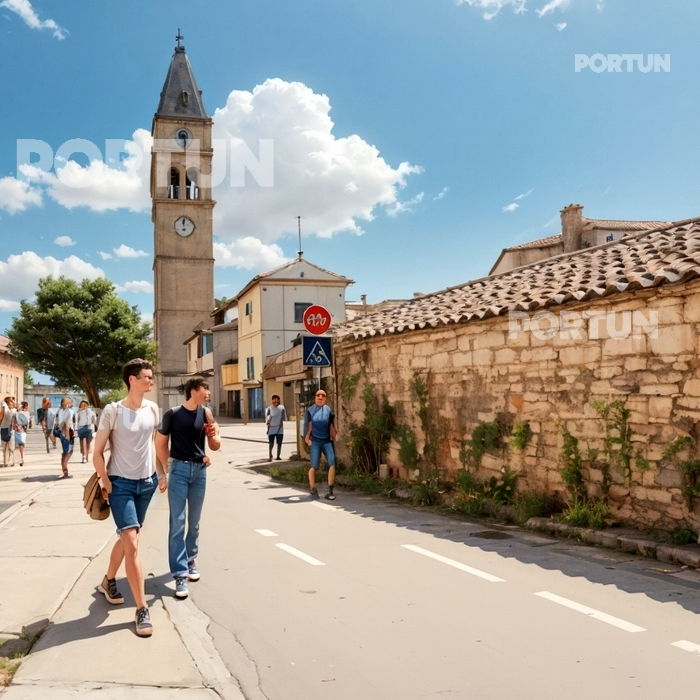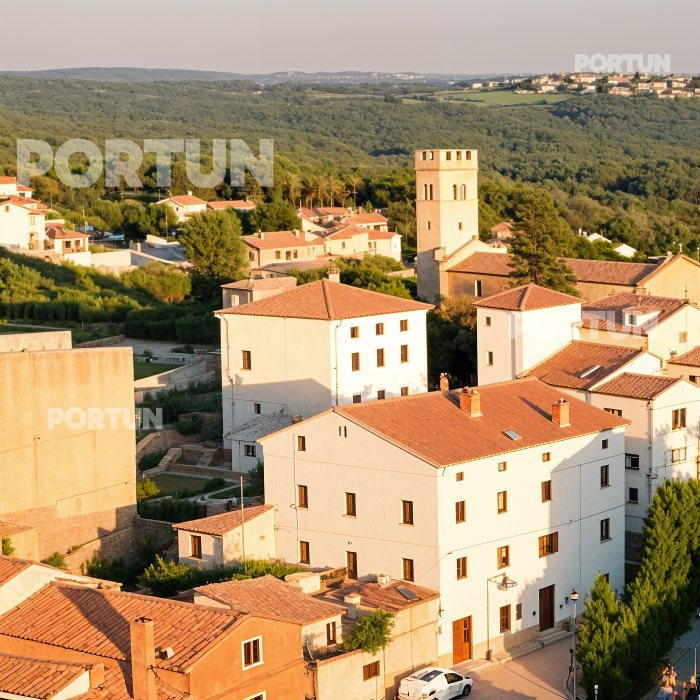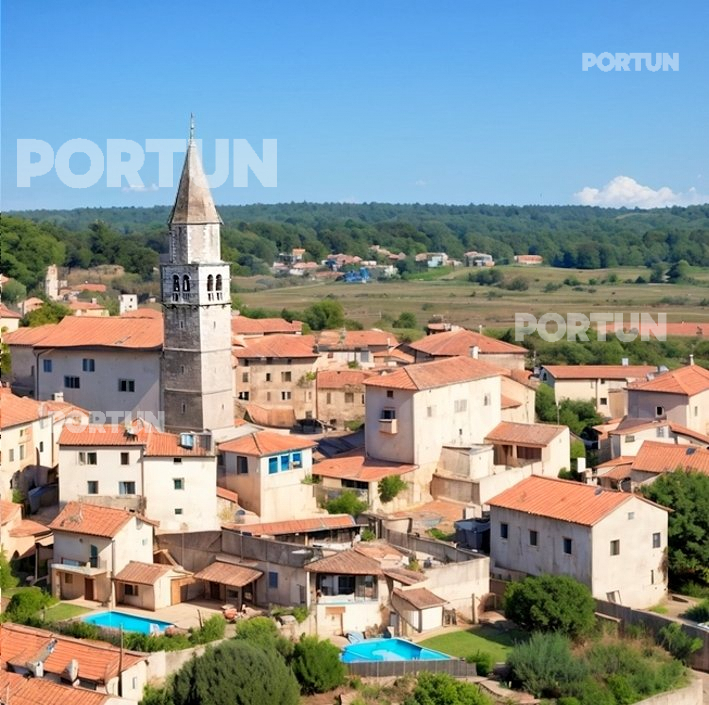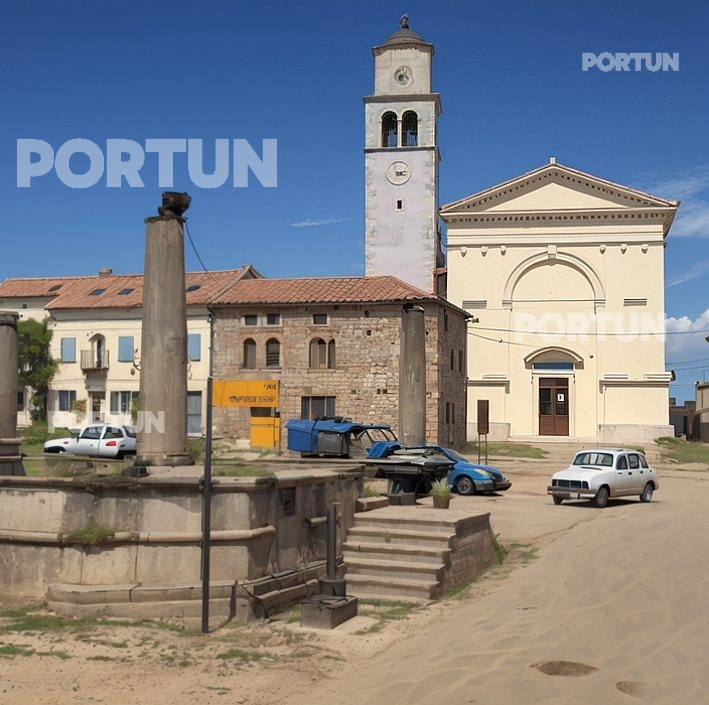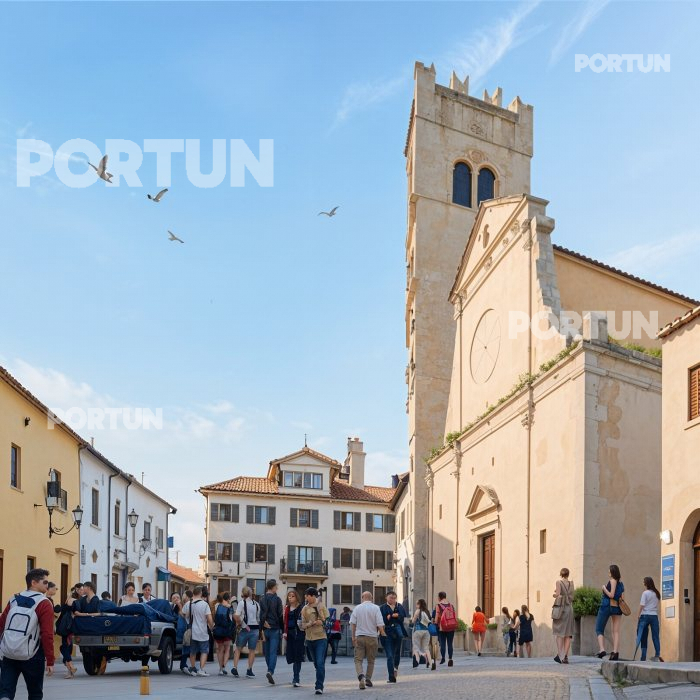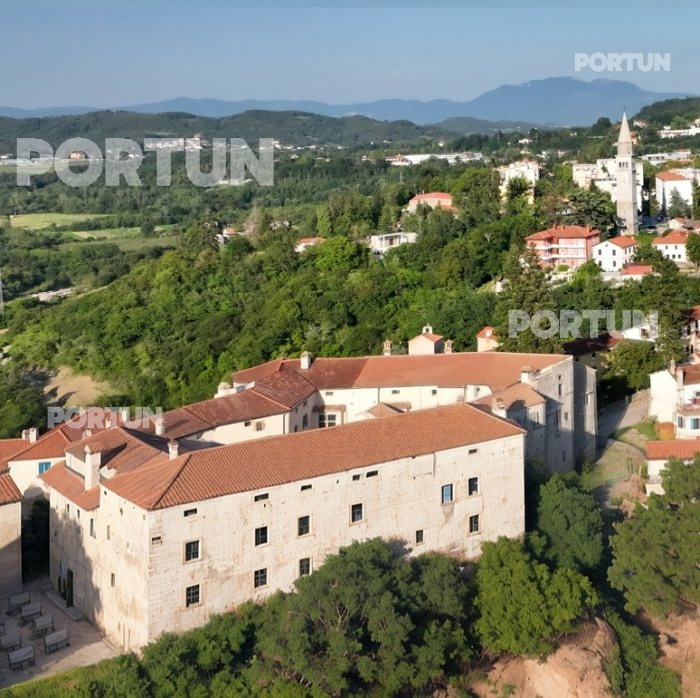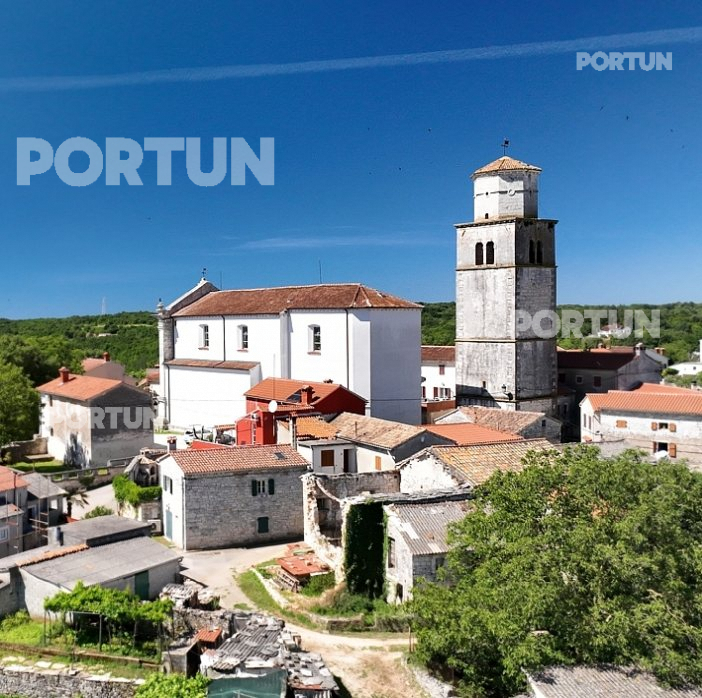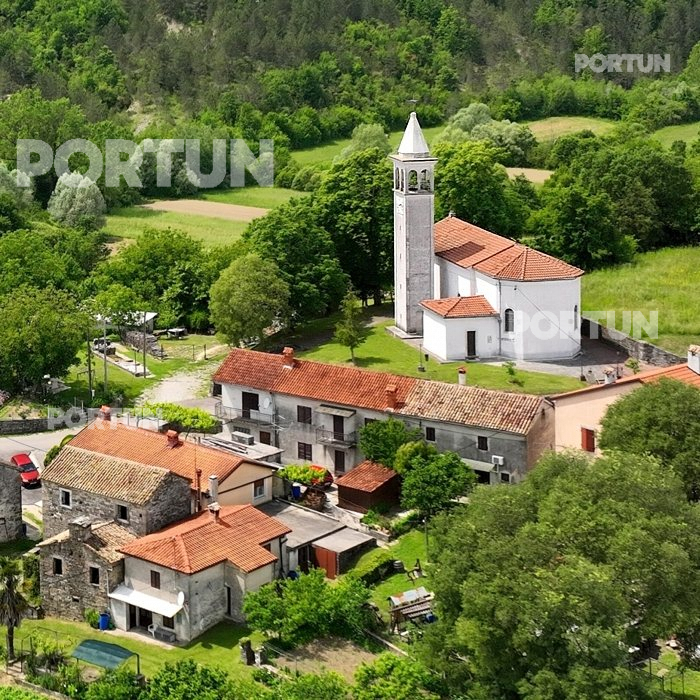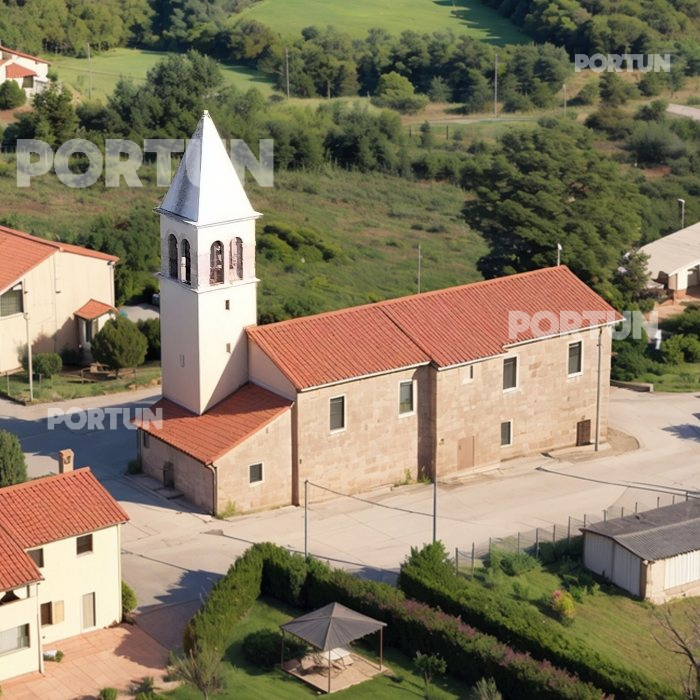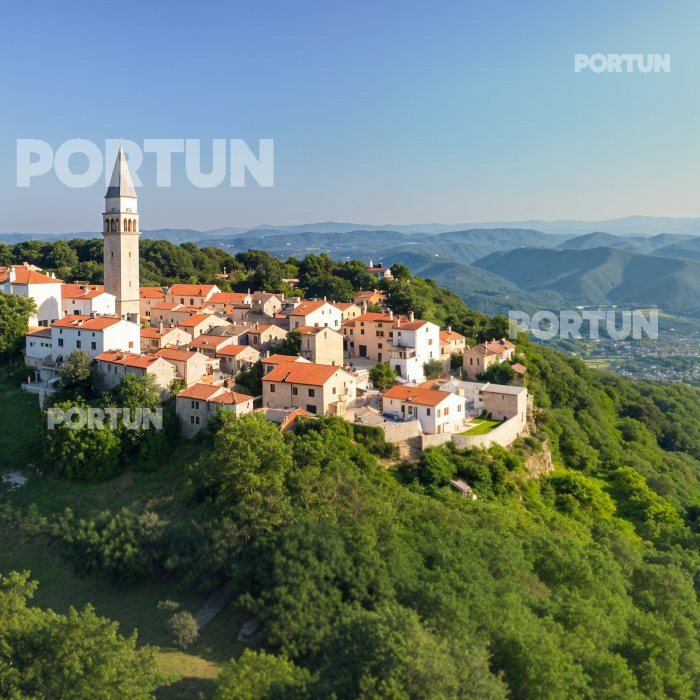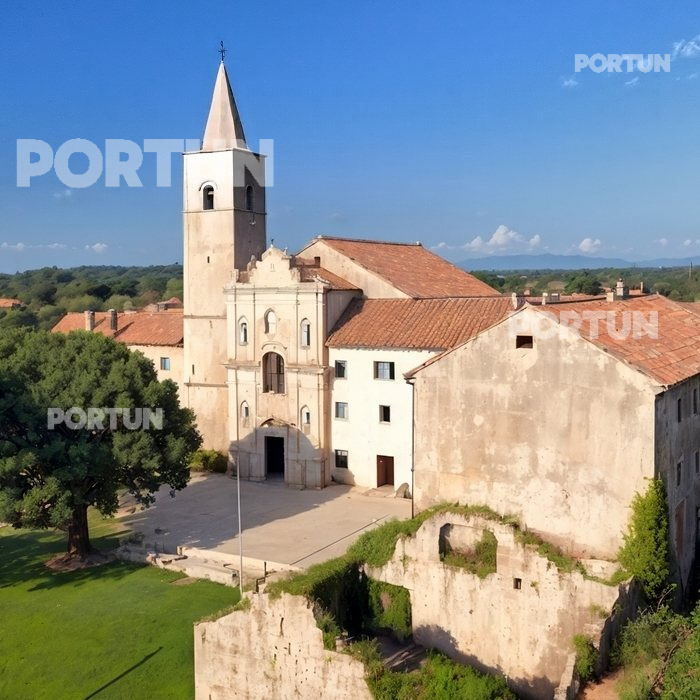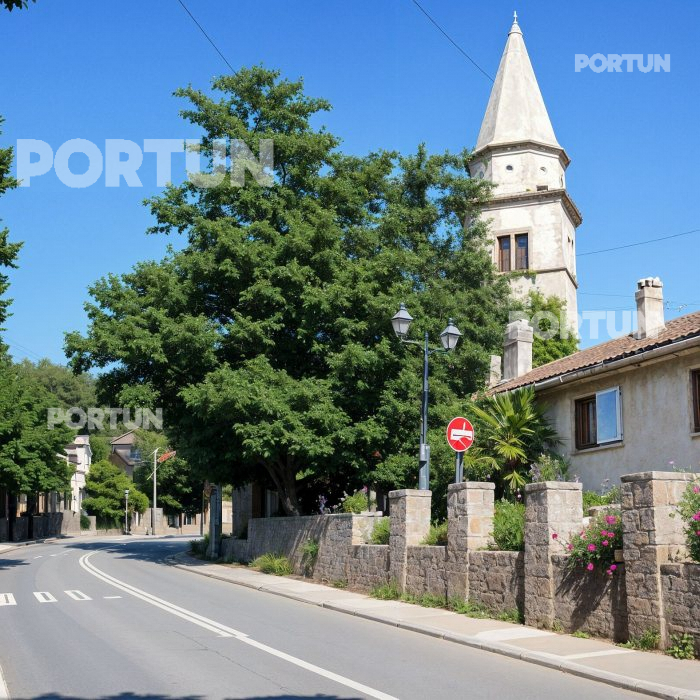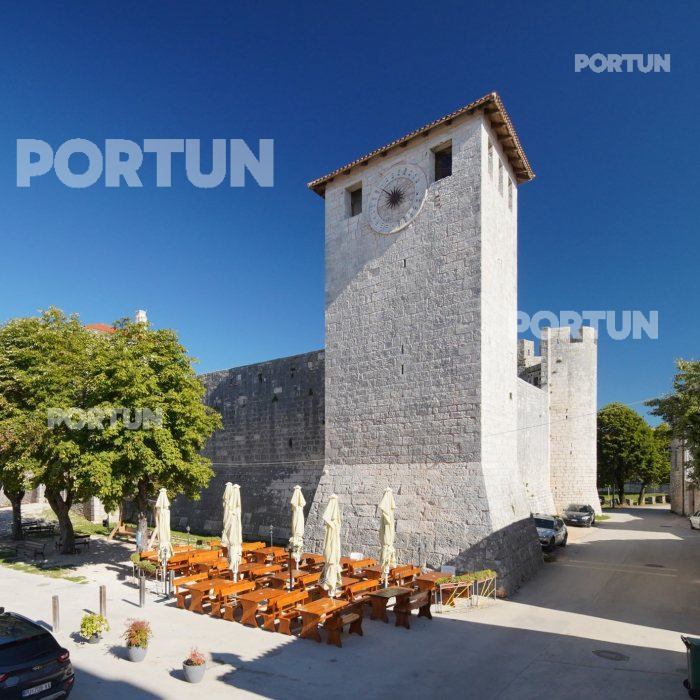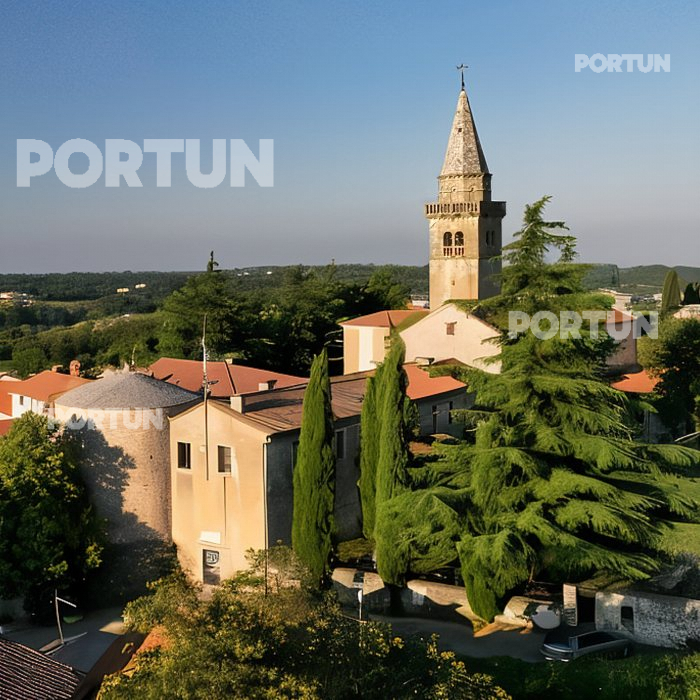Traces of life above the chasm of the Pazinčica date back to around 1500 BCE. During the Bronze Age, people inhabited the cliffs above the Pazin Cave, leaving behind only pottery fragments. Pazin was first officially mentioned in 983 AD as the so-called Pazin Fortress (Castrum Pisinum).
In the Pazin area, there are four protected cultural assets, including the cultural-historical ensembles of Beram, Lindar, Trviž, and Pazin. Beram, located on a hill near the Pazin Cave, preserves the monument of the Church of St. Mary on Škriljine with frescoes by Master Vincent from Kastav. Lindar, also situated on a hill, has the Church of St. Sebastian and Fabian and the Chapel of St. Catherine with a depiction of the "Living Cross." Trviž, several kilometers from Pazin, includes the remains of a wooden painted tabernacle from the Church of St. Peter and Paul.
The oldest trace of the Pazin Castle dates back to 983 AD and is considered one of the most valuable examples of Croatian fortification heritage. Today, the Ethnographic Museum of Istria, the Museum of the City of Pazin, and the State Archives operate within the castle. Pazin also encompasses two protected natural assets: the Pazin Cave and the cypress tree in Kašćerga. The Pazin Cave, the largest karst abyss in Istria, drains the Pazinčica River underground to the valley of the Raša River. The legend of the Pazin Cave tells of the giant Ban Dragonja, who created the rivers Dragonja, Mirna, and Pazinčica. This extraordinary natural phenomenon has inspired many writers, including Nazor, Yriartea, probably Dante, and Jules Verne in the novel "Matias Sandorf." The cypress tree in Kašćerga was declared a botanical monument in 1972 due to its specific shape caused by a lightning strike.
Pazin, considered the heart of Istria, not only reveals the richness of its history but also its splendid cultural heritage and captivating untouched nature that surrounds it.
Real estate market in Pazin – central Istria offers peace and investment potential
Why choose Pazin for real estate investment
Pazin, the administrative center of the Istria County, is located in the heart of the peninsula, making it a well-connected and strategically positioned location. The town covers an area of 139.1 km² and is known for its natural attractions, especially the spectacular canyon of the
Pazin Cave, where visitors can experience a thrilling speleo adventure with a zip-line. Thanks to its history, safety, and infrastructure, more and more domestic and international buyers are deciding to purchase
real estate in Pazin for a stable and pleasant lifestyle.
Diverse settlements and life outside the urban core
The
Town of Pazin includes 18 settlements: Beram, Bertoši, Brajkovići, Grdoselo, Heki, Kašćergani, Kršikla, Lindar, Pazin, Trviž, Vela Traba, Zamask, Zamaski Dol, Zarečje, Zarečki Brijeg, Ježenj, Vrh Martinski, and Stancija Pataj. These villages offer an authentic Istrian atmosphere and are ideal for those who want to live in a peaceful rural environment with the convenience of city proximity. Buying a property in these areas often means better prices and larger plots of land.
Real estate offer in Pazin – what’s available
The
Pazin real estate market offers a wide range of options – from renovated stone houses to new builds and land parcels. Buyers can choose among holiday homes, apartments in newer buildings, and construction plots with infrastructure. More and more luxury projects are emerging that combine modern design with traditional local architecture.
Houses for sale – tradition meets comfort
The selection of
houses for sale in Pazin includes both old stone houses in the town center and newer family homes in the suburbs and surrounding villages. These properties often come with spacious gardens, private parking, and views of nature, making them ideal for families or as rental investments. Prices are significantly lower compared to coastal towns.
Apartments in Pazin – quiet urban living
Apartments for sale in Pazin are in high demand due to proximity to schools, kindergartens, health services, and shopping centers. The offer includes both small one-bedroom units for young buyers and larger family apartments. New buildings come with modern layouts, energy-efficient solutions, and private parking, while prices remain competitive compared to the rest of Istria.
Land plots near Pazin – opportunities for development
Land for sale in Pazin is ideal for building family homes or tourist facilities. Buyers can find building plots with access and infrastructure, as well as agricultural land suitable for growing or recreation. The price per square meter is more favorable than on the coast, and with development plans and improved infrastructure, these areas are gaining in investment appeal.
Better opportunities compared to coastal zones
One of the key advantages of buying
property in Pazin is the lower price compared to coastal destinations. House and apartment prices are often 30–50% cheaper than in Rovinj or Poreč areas, attracting families, local entrepreneurs, and foreign investors. Combined with good transport connections, Pazin becomes a smart and affordable choice.
Nearby municipalities – expand your search
If you’re considering a wider area, don’t miss the offers in nearby municipalities:
Buzet,
Motovun,
Tinjan,
Žminj,
Cerovlje,
Gračišće, and
Karojba. All offer a unique atmosphere of inland Istria, rich history, and untapped potential, often at even lower prices than Pazin itself.





